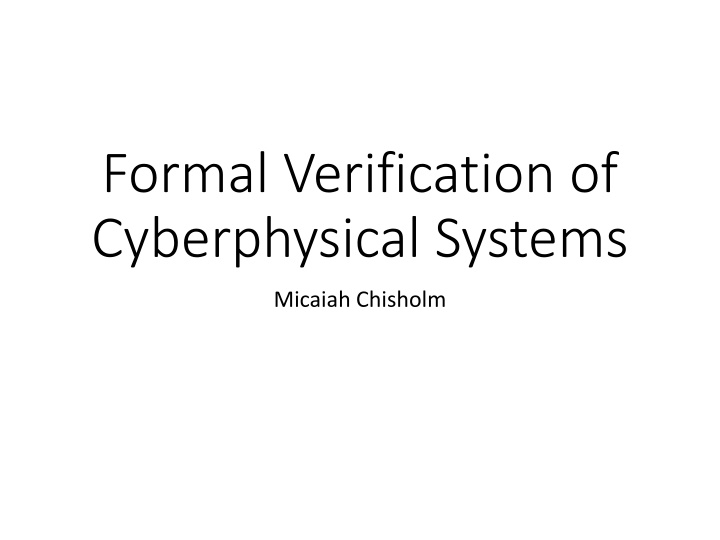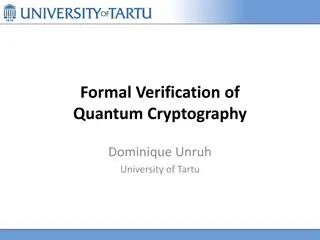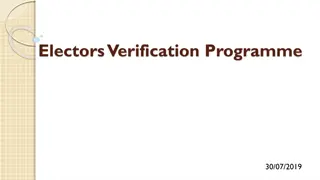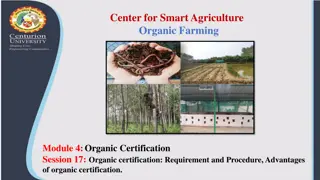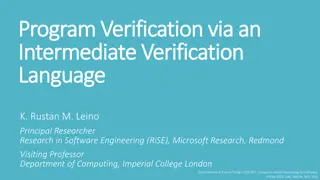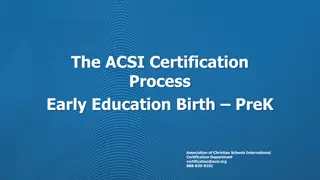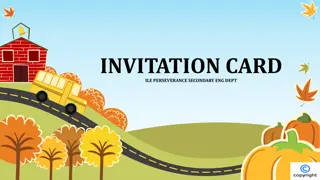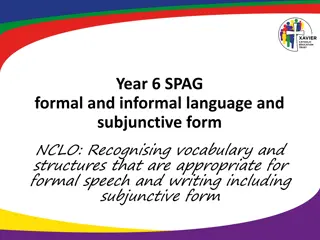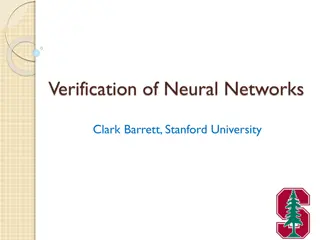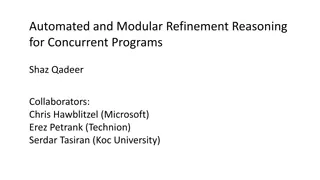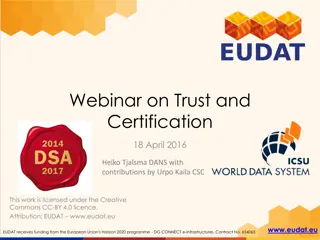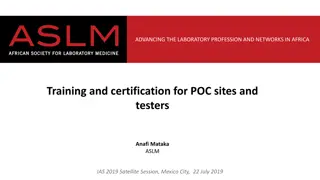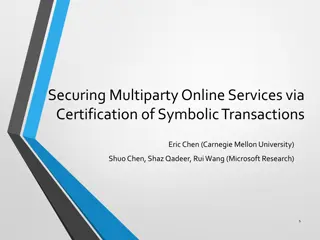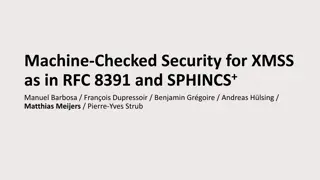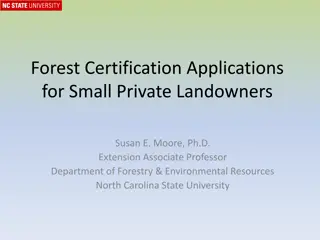Formal Verification of Cyberphysical Systems and Future Certification Methods
Explore the formal verification techniques and tools used in cyberphysical systems, including KeYMaera verification tool, applications in distributed car control and adaptive cruise control, and the formal verification of ACC algorithms. The future work section highlights considerations for sensor data limitations.
Download Presentation

Please find below an Image/Link to download the presentation.
The content on the website is provided AS IS for your information and personal use only. It may not be sold, licensed, or shared on other websites without obtaining consent from the author.If you encounter any issues during the download, it is possible that the publisher has removed the file from their server.
You are allowed to download the files provided on this website for personal or commercial use, subject to the condition that they are used lawfully. All files are the property of their respective owners.
The content on the website is provided AS IS for your information and personal use only. It may not be sold, licensed, or shared on other websites without obtaining consent from the author.
E N D
Presentation Transcript
Formal Verification of Cyberphysical Systems Micaiah Chisholm
Future Certification Methods As policies shift towards formal verification techniques, what tools do we use? Problem studied by multiple groups. A few proposed solutions.
KeYMaera http://symbolaris.com/info/KeYmaera.html Verification tool for hybrid systems Used to verify algorithms in several cyber-physical domains Railway Automotive Aviation Robotics Circuits
Application: Distributed Car Control V2V vs V2I Vehicle to vehicle Vehicle to roadside infrastructure Distributed car control Verifying V2V and V2I communication vs. V2V and V2I coordination How to ensure local decisions don t have unforeseen consequences?
Application: Adaptive Cruise Control Adaptive cruise control: Hybrid, distributed, and now formally verified. In Michael Butler and Wolfram Schulte, editors, 17th International Symposium on Formal Methods, FM, Limerick, Ireland, Proceedings, volume 6664 of LNCS, pages 42-56. Springer, 2011.
ACC Algorithms Formally Verified First study to use general formal verification techniques to the specific problem Uses formal proof calculus Compared studies: Examine simulated results for algorithms Formally analyze highly restricted cases
ACC Algorithms Formally Verified Defines control system as a quantified hybrid program (QHP) Four QHPs: Local Lane Control Collision-free for 2 cars in 1 lane Global Lane Control Collision-free for any unchanging number of cars in 1 lane Local Highway Control Collision-free varying number of cars in 1 lane Collision-free for multiple lanes Collision-freedom for multiple lanes Collision-freedom defined using predicate calculus Verified using KeYmaera
Future Work Consider limitations of sensor data Inaccuracies Time synchronization Asynchronous sensors
ModelPlex Automatically generates model monitors that observe sequences of state for compliance with models. Monitors generated for models validated in KeyMaera Adaptive cruise control Traffic control Train control systems
Formal Methods in Avionics Certification
DO-333 Formal Methods Supplement to DO-178C Formal Method Case Studies for DO-178C http://shemesh.larc.nasa.gov/people/bld/ftp/NASA-CR- 2014-218244.pdf NASA report providing 3 case studies of formal methods used to meet DO-178C specifications Examples illustrate: Theorem proving Model checking Abstract interpretration
Flight Guidance System Theorem proving applied to Synchronization of dual channels Model checking applied to Mode logic of one channel Abstract interpretation applied to Source code of one FGS control law
Certifying the Certification FM.A requirements Justify formal methods used Prove reliability of proof tools Must show certification tool provides confidence at least equivalent to process replaced
Case Studies Take Away A broad range of formal methods apply Can be used at most stages of development process Some methods less automated than others Formal methods must be certifiable Formal method automation must be certifiable BUT, no clear guidance as to what methods to use
